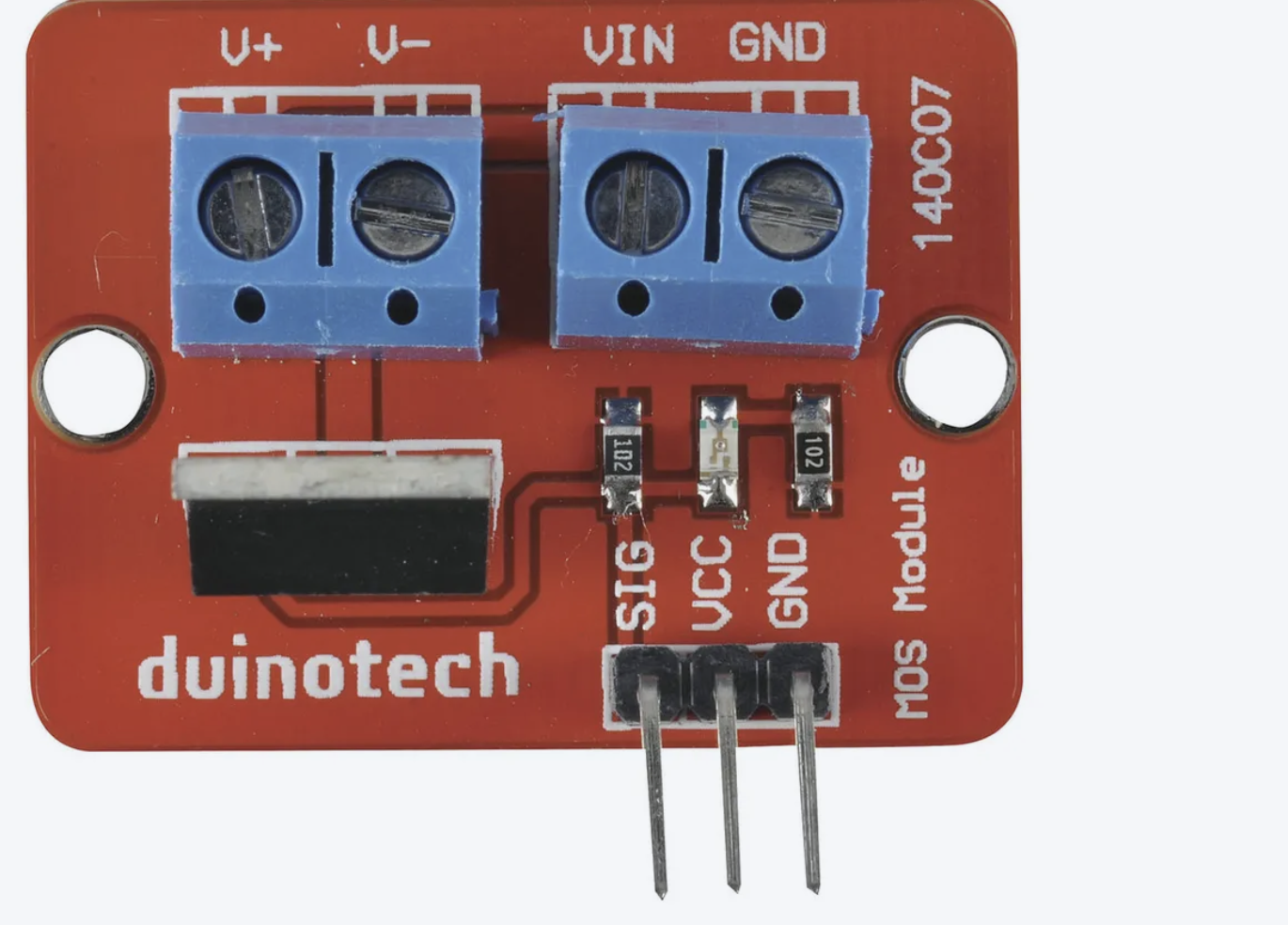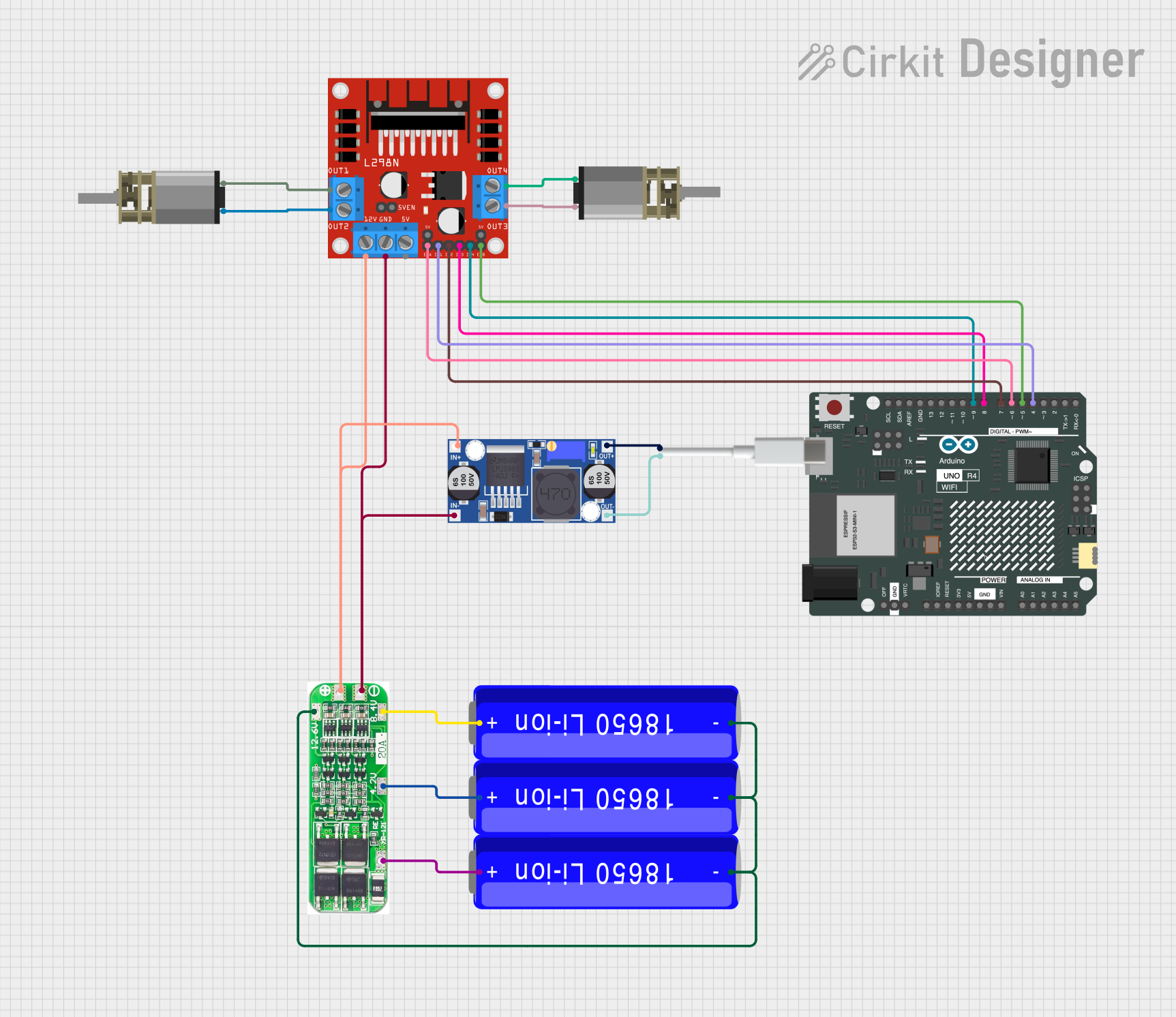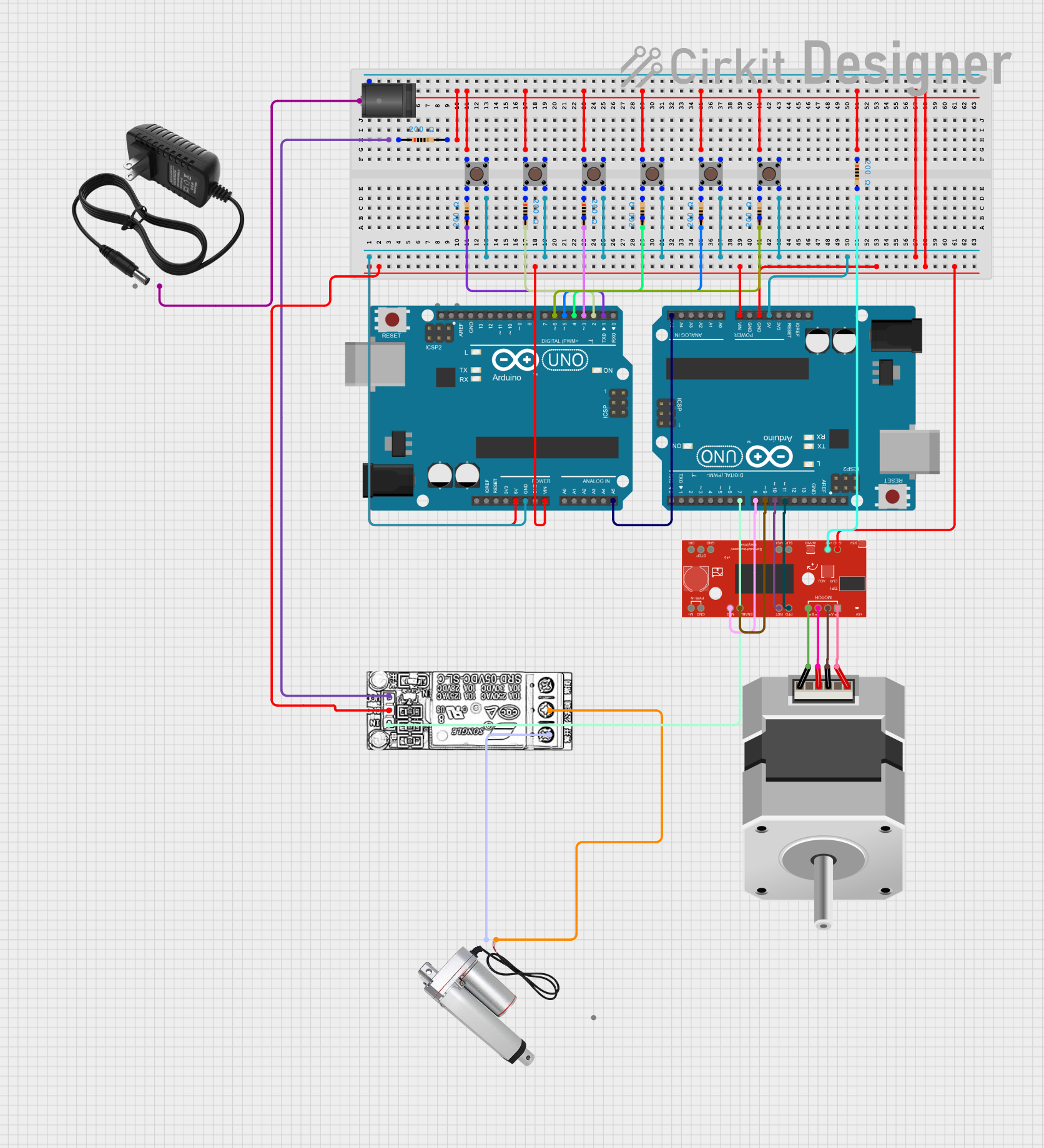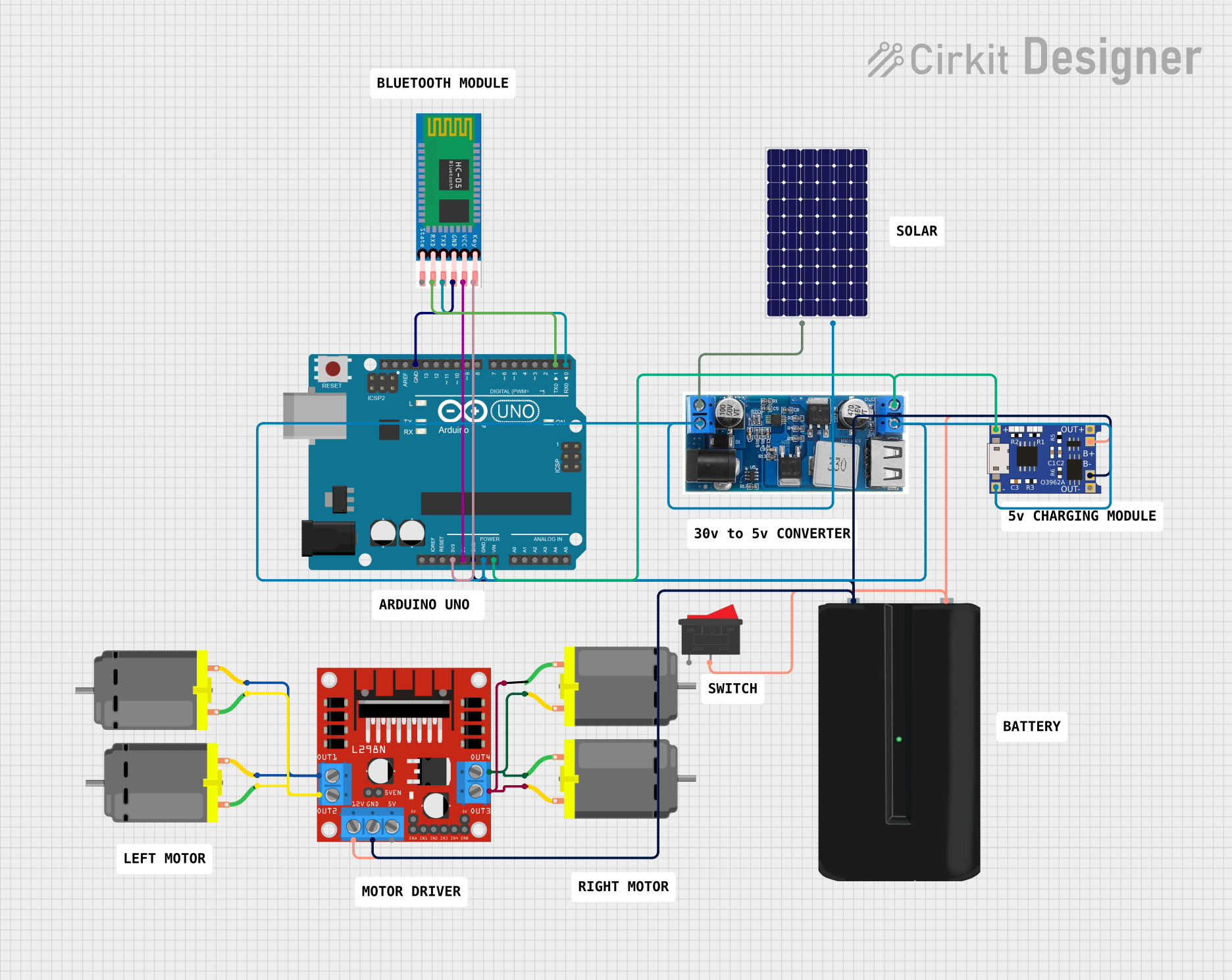
How to Use Duinotech Arduino Compatible 24V 5A MOS Driver Module: Examples, Pinouts, and Specs

 Design with Duinotech Arduino Compatible 24V 5A MOS Driver Module in Cirkit Designer
Design with Duinotech Arduino Compatible 24V 5A MOS Driver Module in Cirkit DesignerIntroduction
The Duinotech Arduino Compatible 24V 5A MOS Driver Module (Part ID: XC4488) is a high-performance MOSFET driver designed to control high-power loads with ease. It is capable of handling up to 24V and 5A, making it suitable for a wide range of applications, including robotics, automation, motor control, and LED lighting systems. This module is fully compatible with Arduino and other microcontroller platforms, enabling seamless integration into your projects.
Explore Projects Built with Duinotech Arduino Compatible 24V 5A MOS Driver Module

 Open Project in Cirkit Designer
Open Project in Cirkit Designer
 Open Project in Cirkit Designer
Open Project in Cirkit Designer
 Open Project in Cirkit Designer
Open Project in Cirkit Designer
 Open Project in Cirkit Designer
Open Project in Cirkit DesignerExplore Projects Built with Duinotech Arduino Compatible 24V 5A MOS Driver Module

 Open Project in Cirkit Designer
Open Project in Cirkit Designer
 Open Project in Cirkit Designer
Open Project in Cirkit Designer
 Open Project in Cirkit Designer
Open Project in Cirkit Designer
 Open Project in Cirkit Designer
Open Project in Cirkit DesignerCommon Applications and Use Cases
- Driving DC motors in robotics and automation systems
- Controlling high-power LED strips or lighting systems
- Switching solenoids, relays, or other inductive loads
- General-purpose high-current switching in DIY electronics projects
Technical Specifications
The following table outlines the key technical specifications of the XC4488 MOS Driver Module:
| Parameter | Value |
|---|---|
| Operating Voltage | 5V (logic level) |
| Load Voltage Range | 5V to 24V |
| Maximum Load Current | 5A |
| Control Signal Voltage | 3.3V or 5V (logic compatible) |
| MOSFET Type | N-Channel |
| Dimensions | 33mm x 24mm x 10mm |
Pin Configuration and Descriptions
The module features a simple 3-pin interface for control and a 2-pin terminal block for the load connection. The pinout is as follows:
Control Pins
| Pin | Name | Description |
|---|---|---|
| 1 | GND | Ground connection for the module and control signal. |
| 2 | IN | Control input pin. Accepts 3.3V or 5V logic signals to switch the MOSFET. |
| 3 | VCC | Power supply for the module's logic circuit (typically 5V). |
Load Connection
| Terminal | Name | Description |
|---|---|---|
| 1 | V+ | Positive terminal of the load power supply (5V to 24V). |
| 2 | V- | Negative terminal of the load, connected to the drain of the MOSFET. |
Usage Instructions
How to Use the Component in a Circuit
- Power the Module: Connect the VCC pin to a 5V power source and the GND pin to the ground of your microcontroller.
- Connect the Load: Attach the positive terminal of your load's power supply to the V+ terminal and the negative terminal of your load to the V- terminal.
- Control the Module: Use a digital output pin from your Arduino (or other microcontroller) to send a HIGH or LOW signal to the IN pin. A HIGH signal will turn the MOSFET on, allowing current to flow through the load, while a LOW signal will turn it off.
Important Considerations and Best Practices
- Ensure that the load does not exceed the module's maximum current rating of 5A.
- Use a heat sink or active cooling if operating near the maximum current for extended periods.
- For inductive loads (e.g., motors, solenoids), use a flyback diode across the load to protect the MOSFET from voltage spikes.
- Verify that the control signal voltage matches the logic level of the module (3.3V or 5V).
Example Arduino Code
Below is an example of how to use the XC4488 MOS Driver Module with an Arduino UNO to control an LED strip:
// Define the control pin connected to the IN pin of the MOS Driver Module
const int controlPin = 9;
void setup() {
// Set the control pin as an output
pinMode(controlPin, OUTPUT);
}
void loop() {
// Turn the load (e.g., LED strip) ON
digitalWrite(controlPin, HIGH);
delay(1000); // Keep it ON for 1 second
// Turn the load OFF
digitalWrite(controlPin, LOW);
delay(1000); // Keep it OFF for 1 second
}
Note: Replace the LED strip with your desired load, ensuring it operates within the module's voltage and current limits.
Troubleshooting and FAQs
Common Issues and Solutions
The load does not turn on:
- Verify that the control signal voltage is correct (3.3V or 5V).
- Check the connections to ensure the load is properly wired to the V+ and V- terminals.
- Ensure the load's power supply is functioning and within the specified voltage range (5V to 24V).
The MOSFET overheats:
- Ensure the load current does not exceed 5A.
- Add a heat sink or active cooling if operating near the maximum current for extended periods.
- For inductive loads, ensure a flyback diode is installed to prevent voltage spikes.
The module does not respond to control signals:
- Confirm that the GND pin of the module is connected to the ground of the microcontroller.
- Check the control signal wiring and ensure the Arduino pin is configured as an output.
FAQs
Q: Can I use this module with a 3.3V microcontroller like the ESP32?
A: Yes, the module is compatible with both 3.3V and 5V logic levels.
Q: Is it safe to use this module with inductive loads like motors?
A: Yes, but you must use a flyback diode across the load to protect the MOSFET from voltage spikes.
Q: Can I control multiple modules with a single Arduino?
A: Yes, as long as you have enough digital output pins available and the total current draw does not exceed the Arduino's power supply capacity.
Q: What happens if I exceed the 5A current limit?
A: Exceeding the current limit can damage the MOSFET or cause the module to overheat. Always ensure your load operates within the specified limits.